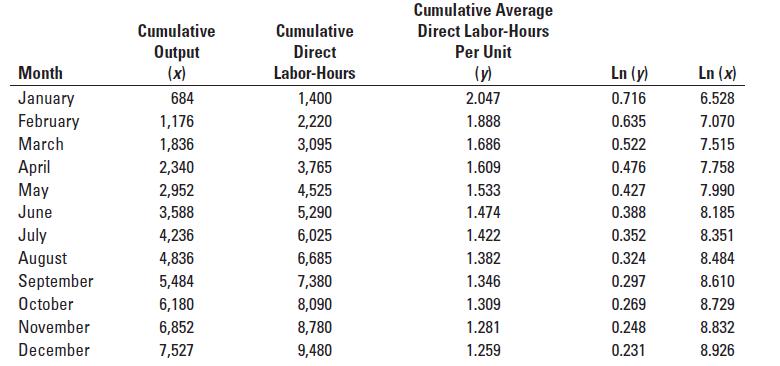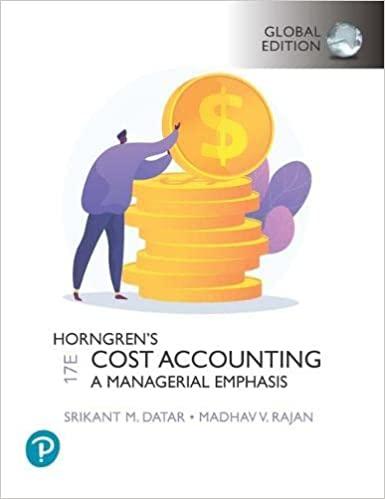Inbee is concerned that she still does not understand the relationship between output and labor consumption. She
Question:
Inbee is concerned that she still does not understand the relationship between output and labor consumption. She consults with Jim Park, the head of engineering, and shares the results of her regression estimation. Jim indicates that the production of new smartphone models exhibits significant learning effects—as Hankuk gains experience with production, it can produce additional units using less time. He suggests that it is more appropriate to specify the following relationship:
![]()
where x is cumulative production in units, y is the cumulative average direct labor-hours per unit (i.e., cumulative DLH divided by cumulative production), and a and b are parameters of the learning effect. To estimate this, Inbee and Jim use the original data to calculate the cumulative output and cumulative average labor-hours per unit for each month. They then take natural logarithms of these variables in order to be able to estimate a regression equation. Here is the transformed data:

Required:
1. Estimate the relationship between the cumulative average direct labor-hours per unit and cumulative output (both in logarithms). Verify that the following is the result obtained by Inbee and Jim:
![Regression 1: Ln (Cumulative avg DLH per unit) = a + [b x Ln (Cumulative Output)] Variable Constant](https://dsd5zvtm8ll6.cloudfront.net/si.question.images/images/question_images/1696/2/2/6/766651a5dcedcd951696226752997.jpg)
2. Plot the data and regression line for the above estimation. Evaluate the regression using the criteria of economic plausibility, goodness of fit, and slope of the regression line.
3. Verify that the estimated slope coefficient corresponds to an 86.6% cumulative average-time learning curve.
4. Based on this new estimation, how will Inbee revise her budget for Hankuk’s variable cost for the expected output of 650 units in January 2021? How confident is she of this new cost estimate?
Step by Step Answer:

Horngrens Cost Accounting A Managerial Emphasis
ISBN: 9781292363073
17th Global Edition
Authors: Srikant Datar, Madhav Rajan





